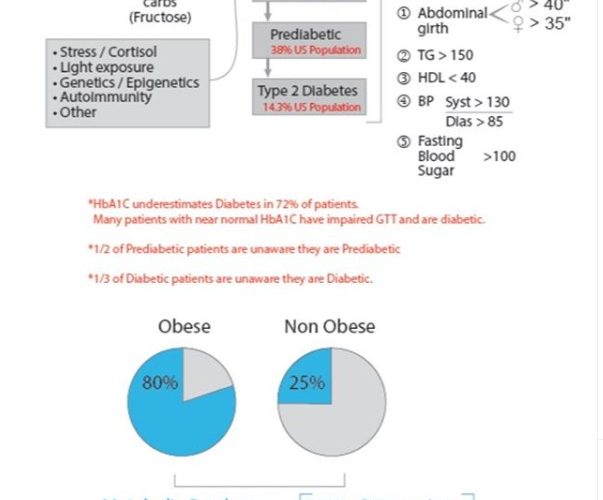Metabolic syndrome is an early indicator of diabetes even among people of normal weight, and it’s important to take steps to prevent and treat it. During the early phase of metabolic syndrome, the body is compensating for insulin resistance by increasing insulin production to maintain near-normal blood glucose levels. However, when the pancreas and liver overflow with fat from the chronic high insulin levels (the fat-storage hormone), there is a sudden change. Hyperinsulinemia can no longer keep up with the pace of insulin resistance, and the pancreatic beta cells, responsible for insulin production, are also unable to keep up. As this compensatory mechanism fails, the blood glucose rises quickly. It takes only two years or so before the beta cells begin to fail and full-blown type 2 diabetes is diagnosed.
The diagnosis of type 2 diabetes exists on a spectrum. It goes from healthy to metabolic syndrome (with or without obesity) to prediabetes to diabetes. Almost all individuals who are type 2 diabetic for a period of time and treated with insulin become obese due to the fat storage caused by insulin and remain so until they get a secondary complication. However, the metabolic syndrome that precedes the frank diagnosis of diabetes can exist even in normal-weight individuals. The key is preventing metabolic syndrome, whether caused purely by carbohydrate overconsumption or by vegetable oil omega-6 consumption because it will eventually lead to Type 2 Diabetes.
This protocol is relevant for patients who have metabolic syndrome with or without obesity, as they are both risk factors for type 2 diabetes.






